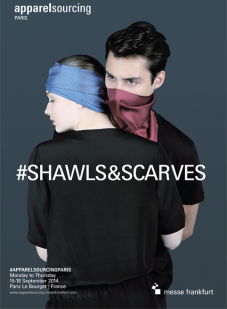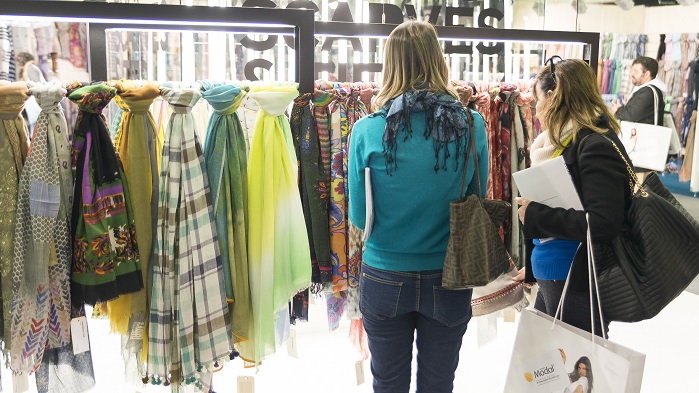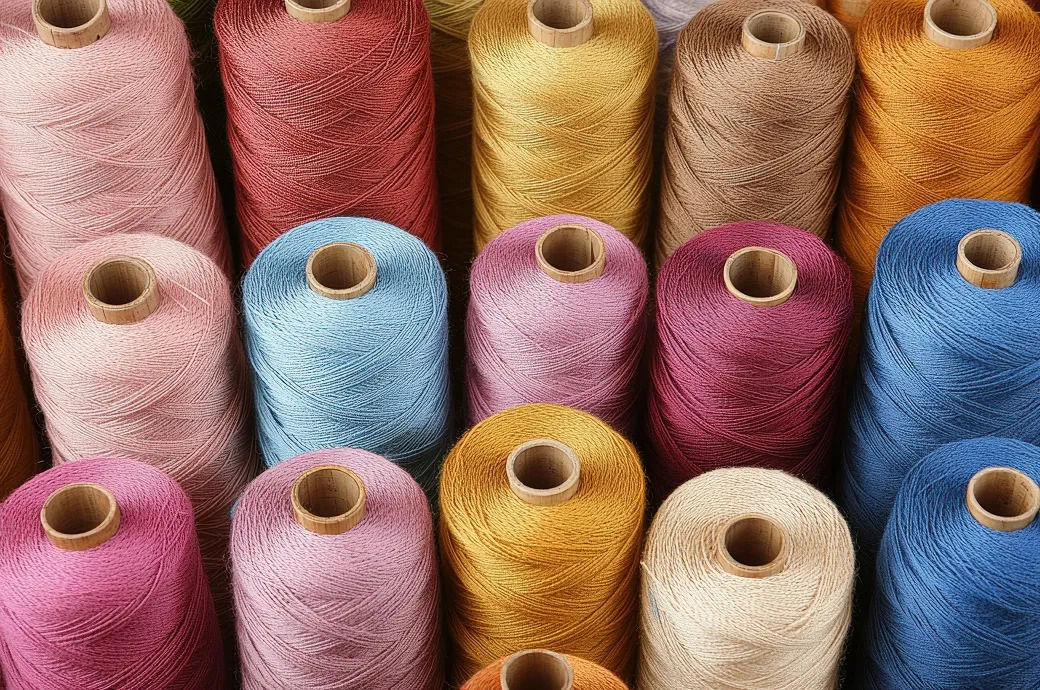FW
All Pakistan Textile Mills Association (APTMA) has asked for government’s intervention to free market mechanism, as there is a move to procure seed cotton (phutti) equivalent to one million bales at the support price of Rs 3,000 per 40kg.
The association said that the cost of production for cotton growers was very high, as the price of urea has been increased by Rs 150 per bag and diesel prices have jacked up by 45 per cent. It has put cotton farmers into trouble. The Trading Corporation of Pakistan had procured 90,000 cotton seed last year and incurred a loss of one billion rupees.
Industry body questioned the Corporation’s motive behind repeating the same mistake this year when last year’s procurement is still lying with it. The country’s exports during the outgoing fiscal dropped by 17 per cent and to benefit small growers, it said that the government must procure total production of 14 million bales and supply it to the textile industry at the international price.
Rising production costs are also negatively affecting the cotton farmers, like the textile industry players. The government can assist them by reducing cost of inputs by providing a direct support on electricity and fertilizer.
www.aptma.org.pk
Noble Biomaterials has developed XT2, an anti-odor protection fiber technology. The fiber is available as filament or a staple fiber. Based in the United States, Noble Biomaterials is an antimicrobial company. The polyester-based textile yarn, which is fully dyeable and incorporates silver particles locked into the polymer to prevent leaching during laundering, is a big step forward in terms of design flexibility and performance.
XT2 incorporates silver particles into the polymer during the extrusion and therefore is fully dyeable. It can even be dyed white. Previous versions of the XT2 yarn were based on nylon and took on a silver color, which meant there was less design flexibility. However, the latest dyeable version of yarn now opens up opportunities in the outdoor and sportswear market where design and environmental issues are an important part of the offer. XT2 has been approved and certified by the Bluesign certification system after meeting the requirements for durability, adherence, efficacy, toxicity, and safety. It has been tested and certified by Oeko-Tex 100 (testing for harmful substances). Noble’s original X-Static brand is widely used in the hosiery sector along with the healthcare market such as in surgeon’s scrubs and other antimicrobial textiles.
www.noblebiomaterials.com/
Texcare will be held in Germany from June 11 to 15, 2016. This trade fair exhibits the latest trends and innovations in the laundry and dry-cleaning industry. The textile care sector is a strong and growing market, both in Europe and worldwide. The field of textile services, in particular, enjoys huge market volumes and is gaining importance. There is continued growth in terms of textile hire with IT and merchandise management systems. Services, and ecological aspects of textile care are gaining importance.
The world's leading manufacturers and service providers will present innovative products and future-oriented services. Texcare is the decisive forum for textile cleaning, laundrettes, pressers and colorers; rugs, carpets and upholstery cleaning, the professional, working and protective clothing trade, the hotel and catering trade the health and hygiene market; and the specialist retail trade.
Around 60 per cent of trade visitors are personally responsible for making purchasing and procurement decisions or at least exert a considerable influence on such decisions. Textile care is under great pressure to come up with innovations as a result of increasing outsourcing processes, the growing use of automation technologies and a growing demand for modern, easy care textiles.
ish.messefrankfurt.com/content/texcare/frankfurt/en.html
The Sole Sustainability Index (SSI), which analyses the performance of some of the biggest branded apparel and footwear businesses was revealed by Morgan Stanley Research. The index aggregates existing data and compares the companies’ performance in several terms— social matters (supply chain management and community engagement), environmental issues (examining water, waste and raw materials, specifically cotton and leather), and governance (how sustainability is integrated into the business strategy and how shareholder-friendly the corporate governance structure is).
The leader in environmental issues was revealed as Nike, whereas, PVH (Calvin Klein, Tommy Hilfiger etc.), and Nike shared the first spot for social topics. The VF Corporation (Lee, Wrangler, The North Face, Vans, etc.) was on top for governance.
On this index, where the maximum score is 300, overall, the highest rankers are Nike, VF Corp., and Hanesbrands (Hanes, Champion, Playtex, Wonderbra etc).
Morgan Stanley however admitted that there were several limitations to these results. There is little, quantifiable industry ESG data (environmental, social and corporate governance). Besides, the existing numbers are difficult to compare. The report also stated that a company’s SSI score is primarily driven by disclosure quality, and the existence of targets and trends.
Thus, VF Crop, Nike and Hanesbrands are at the top, because of their disclosure of most evidence of their commitment to sustainability throughout their core operations. Though, there isn’t enough third-party audited data.
Morgan Stanley is also a financial institution with severe commercial interests. Thus the company’s objectivity in selecting the companies to be examined and their final evaluation is not given.
The spinning industry in Punjab, which employs close to 400,000 people and contributes 15.6 per cent of the total yarn production in India is suffering because of high power costs and taxes. Players say they have not carried out any major expansions in the spinning sector in the last few years.
In the last few years, textile majors of Punjab including Oswal Group, SEL Manufacturing, Abhishek Industries and Nahar Industrial Enterprise decided to set up their mills in Madhya Pradesh instead of Punjab since the state government there offered 5 per cent to 6 per cent interest subvention. The average per unit power tariff in Madhya Pradesh is close to Rs 5.50 per unit against Rs 8.25 in Punjab.
Punjab’s spinning industry has also been demanding rollback of 6.5 per cent VAT on cotton yarn. But the state government, instead of offering any relief to the already suffering industry, further increased the Infrastructure Development cess from 5 per cent to 13 percent from July 1, 2015. Given the situation in Punjab, many leading textile players chose to invest over Rs 10,000 crores in the other states.
While Vardhman Group invested about Rs 2,500 crores in Madhya Pradesh, Abhishek Industries built units worth Rs 3,000 crores and Nahar Industrial Enterprise and SEL Manufacturing, each invested Rs 2,000 crores in Madhya Pradesh. Out of 138 spinning mills in the state close to 80 are operational. Others are either sick, closed or under corporate debt restructuring. Decline in Chinese demand of cotton yarn has led to piling up of excess inventories.
Vardhmangroup.net

Messe Frankfurt France says, “Registrations for the trade fair have broken a new record, passing the 400-exhibitor level, which represents a 40 percent rise in attendance, compared to the 289 exhibitors in September 2014. The event is consolidating its position as Europe’s premier world garment sourcing event.”
The knits section is showing strongest growth, with more than 35 new manufacturers, such as Anjuman Garments (Bangladesh), BLR Knits (India), Thai Son S.P (Vietnam), Sanyang Cashmere Textile (China) and others, who are focusing on highly diverse collections of circular and cut and sewn knits for men, women and children. Unstructured garments continue to develop, with 29 businesses and the sleeved pieces segment will welcome 25 new manufacturers, including Apex International (India) and New Zeenat Textile Mills (Pakistan).
Among the newcomers in sportswear are: fashionable collections by Kreateks Tekstil (Turkey) and Alphabeta (South Korea) will be on display. Accessories always attract more exhibitors. Newcomers such as Ningbo Kingshi (China) and Rashish (India) are aiming to attract buyers with traditional, fashionable pieces in quality finishes. The dedicated Shawls & Scarves section will see three newcomers among its 21 exhibitors: Porostar (China), KUM (India) and Shengzou First Garment & Necktie (China). The collections on offer will be highly market-oriented, displaying particular skills, such as hand embroidery, vegetable dyes and digital printing.
Made to measure deserves a special mention as it is still a strong trend in sourcing for customised dresses and unstructured garments at competitive prices. Made to measure had a modest debut at last year’s fair and is coming back in force, represented by seven companies: Ai Xin Dao, Dalian Faric Garment, Ningbo LS Lace, Ningbo EJJ Knitting Garment, Sendi, Shanghai Leads Enterprise and Wujiang Silk Garment. On the whole, the manufacturers at this event will be offering collections intended for the entry-level and midrange women’s and children’s market. In the case of men and accessories, there will be many premium collections on offer alongside more affordable collections.
Vietnam pavilion to feature ten exhibitors
The fair will feature a national pavilion for the Vietnam Textile and Apparel Association (VITAS), with ten exhibitors including Babeeni, Diep Duong, Garment 10 Corporation, Hai Phong Xhan, Hoa Tho Textile, International Fashion, Lewave, Resources Garment, Thai Son S.P. and Thien Nam Investment & Development JSC. They will be offering accessories, casualwear, unstructured garments, bottom pieces, business wear, formal wear, children’s wear and denim for men, women and children, mainly targeting entry-level and mid-range buyers.
Many brands are attracted to Vietnam because of the quality and sourcing solutions which the country and its businesses can offer owing to free trade agreements with Europe (Eurasian Economic Union - EAEU). In other respects, Vietnam has become the world’s fourth-largest exporter of textile products on the basis of its first-quarter figures: $12.18 billion and a year-on-year rise of 8.2 percent in exports to the EU, according to the Vietnam National Textile and Garment Group (Vinatex). Also on the agenda is a seminar ‘Vietnamese textile and clothing sector: a prosperous, competitive industry’ led by Jean-François Limantour , a specialist in both sourcing and Vietnam.
Seminars and programs scheduled for the fair
The trade fair has a full program, featuring four seminars and numerous fashion shows to reveal the specialities of exhibitors from participating countries. Seminars on sourcing, apart from the one on Vietnam, will feature two topics: ‘European garment sourcing in 2015: suppliers, products and markets’ and ‘Garment sourcing management and alternative strategies for industrial offers’.
On corporate responsibility, the association Well made will present ‘Trends in sustainable development’, which will provide professionals with information on new innovations and development of certification. The fashion shows, a showcase for skills, will allow visitors to evaluate exhibitors’ products, shown off to their best effect by the artistic director responsible for the programme. Seminars concentrating on countries and types of product are also scheduled during the four days. As for young designers, the finalists in the 2015 Frankfurt Style Award competition will reveal their creations during the fair.
The average price of EU textile and clothing imports jumped 14.2 per cent during the first four months of 2015, predicts Textile Outlook International. It is expected to continue to rise in 2015 and 2016. The jump in average import price during the four-month period resulted from a sharp 18.9 per cent depreciation in the value of the euro against the US dollar and despite a softening of raw material prices in the second half of 2014.
The sharp depreciation of the euro against US dollar made EU imports expensive in euro terms. And importers, who had to pay substantially more for textiles and clothing, responded by cutting volume of textile imports by 0.6 per cent and clothing imports by 3.7 per cent. While these deductions appear relatively small, full impact of currency movements is yet to be felt as many of the orders fulfilled in the first four months of 2015 were placed before the euro depreciated.
In clothing alone, the average price of EU imports shot up by 17.8 per cent during the first four months of 2015. Interestingly, among the EU's 10 leading clothing supplying countries, the fastest price increases were seen in case of imports from those which supplied clothing to the EU at the lowest average prices. This suggests, suppliers in these countries had such tight margins that they were unable to absorb the effect of the depreciation of the euro against the US dollar and were therefore forced to pass on the increases in prices in euro terms to buyers.
In 2015, the euro is forecast to depreciate against the US dollar by 21.3 per cent. Furthermore, in 2016 it is expected to depreciate by a further 5 per cent to its weakest level since 2002. Textile and clothing import prices in euro terms are therefore expected to continue to increase, even if they fall in US dollar terms. As a result, experts point out that, European buyers may cut back on their purchases in 2015 and EU imports of textiles and clothing may fall in volume terms.
US fashion company Threads 4 Thought is in the active wear market. It makes clothes from polyester made out of recycled plastic bottles. So, 37 bottles are recycled to make a legging and 19 bottles for a sports bra. Along with being made out of plastic bottles, the line has fashion flair. Fashion looks include a tuxedo-style stripe down the side of the leggings. Some of the tuxedo stripes are made of a mesh that makes leggings more breathable. Others feature patterns such as camouflage.
The two core pieces of the line are a three-fourth legging called Half Lotus Crop and a full-length piece called the Firefly Legging. These pieces come in black and heather gray. Much of the active wear sold in the market is made out of nylon. Threads 4 Thought chose polyester as an improvement over nylon since nylon is not good for the environment. It’s manufactured from petroleum products and in a way that pollutes the environment.
Threads 4 Thought makes new deliveries every 60 days. The leggings always come in new prints and designs. Other pieces in the line are jackets, tank tops and T-shirts. The brand also makes graphic tees for women and some men’s looks designed in its New York City office.
https://www.threadsforthought.com/
Alliance set a target in March last to complete all remediation and final inspections at about 600 of its supplier factories by July 2017 in Bangladesh. It also expected to complete final inspections in at least 10 per cent of its listed units by July 2015. Alliance is a platform of North American apparel retailers and buyers. The remediation could not be completed as the flaw-fixing program had been advancing slowly because of mainly because of the political instability during the first quarter of 2015 that hampered import activities and created difficulties for manufacturers to run their businesses.
However, Alliance expects all remediation work to be complete by 2018. After the completion of initial inspection, Alliance found that on an average only 32 per cent of the required remediation was done while it conducted second verification at about 17 factories. The rate of remediation was 87 per cent at the 17 units. Alliance says that by making financing more widely available and affordable, and working with factory owners to make the necessary repairs, it is making factories safer for millions of workers.
The platform says it’s working with the government of Bangladesh and apparel makers to address work place safety issues.
www.bangladeshworkersafety.org/
The 28 countries that comprise the European Union have unanimously voted to expand an existing ban on a common chemical used in cleaning, dyeing and rinsing textiles. The EU banned the use of nonylphenol ethoxylates (NPE) in textile manufacturing more than 10 years ago, but the latest move expands the prohibition to include clothing imported by member states.
The decision was based on reports that found the chemical enters water supplies during washing, where it disrupts hormones in fish and impacts their fertility and development. The new restriction will not apply to second-hand goods or recycled textiles because it is assumed these have already been washed several times and so will contain negligible amounts of NPE. However, a number of apparel and textile companies feel compliance with the new restriction will be difficult because NPE is present everywhere in the supply chain and has numerous uses.
NPE is used in textile manufacture as a cleaning, dyeing and rinsing agent. This toxic chemical remains in the garment, released once clothes are washed, breaking down to form toxic nonylphenol. Nonylphenol is a persistent chemical with hormone-disrupting properties that builds up in the food chain and is hazardous even at very low levels.












